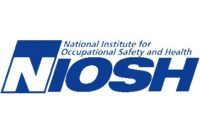The safe, skilled, ready workforce initiative from NIOSH
NIOSH wants young, new workers to have core safety competencies
 From the Director's Desk
From the Director's Desk
by John Howard, M.D.
Director, NIOSH
The Safe, Skilled, Ready Workforce Initiative
Business and civic leaders, the labor community, economists, and educators are talking about the future of the American workforce. As the saying goes, the future begins now. News stories abound about the “skills gap”—in nursing, manufacturing, engineering, computer technology and other fields—that require postsecondary technical education and training. The October 2011 interim report by the President’s Council on Jobs and Competitiveness states, “In the 21st century global marketplace, a nation’s economy can only be as strong as the skills of its people.” Experts contend that shortages of “work ready” individuals are undermining U.S. competitiveness, causing employers to shift jobs overseas, and exacerbating wage stagnation here at home.
What does “work ready” mean? No consensus exists on this question, but numerous frameworks have emerged to address it. In general, these frameworks conceive of individuals who possess both “hard skills” (e.g., reading, writing, and arithmetic) and “soft skills” (e.g., flexibility, self-direction, self-regulation, accountability, leadership, and responsibility). However, knowledge for a safe and healthy workplace is the missing life skill in most work-readiness frameworks. This is a significant oversight. Safe and healthy work is essential to human well-being. Individuals who are injured on the job can’t be productive, fully functioning participants in the workforce.
At NIOSH, we believe that now is the time to make workplace safety and health central to the current conversation about the future “ready” workforce. Many career technical, vocational, apprenticeship, on-the-job, hazardous, and other work training programs already teach workplace safety and health competencies. NIOSH can leverage these efforts and be a unifying voice for the promotion of workplace safety and health knowledge and skills for all individuals, in all education and career pathways.
In this vein, NIOSH has launched the Safe, Skilled, Ready Workforce Initiative with the mission that every person, prior to entering the U.S. workforce or starting a new job, will have the knowledge and skills to contribute to a safe, healthy, and productive workplace. Although employers have the primary responsibility for providing a safe and healthy work environment, this can more easily be achieved when all individuals have basic, protective skills that benefit them on the job now and throughout their lives.
The new initiative targets the delivery of core, work-readiness competencies to young and new workers before they enter the workforce or start a new job. The competencies, which complement the job-specific skills delivered through apprenticeship and career technical or vocational training programs, include the ability to:
- Recognize the benefits, but also the risks associated with work and their impact.
- Recognize that work-related injuries and illnesses are predictable and can be prevented.
- Identify hazards at work.
- Recognize that preventive measures can be taken to avoid injury and illness.
- Identify emergencies at work and how to respond to them.
- Recognize employer and worker rights and responsibilities for safe and healthy work.
- Access resources at work that help keep individuals safe and healthy.
- Demonstrate how to communicate effectively with supervisors and others on the job when feeling unsafe.
NIOSH has a productive history of promoting workplace safety and health at the national level through skills training. These efforts include national skill standards in manufacturing and the NIOSH Youth@Work-Talking Safety curriculum, delivered to thousands of career and technical education students in collaboration with the National Career Clusters Initiative. The Safe, Skilled, Ready Workforce Initiative will build on, and expand, these successful efforts that promote the core competencies outlined above.
The new initiative, which includes worksite wellness and injury prevention programs, aims to prepare all individuals for safe and healthy work. The line between employment and private life has blurred. Hazards at work can lead to risks in personal and community life, and conditions that affect people at home—stress, obesity, cardiovascular disease, depression, and others—spill over into work hours. This results in higher healthcare costs, increased turnover, lower productivity, and higher rates of absenteeism. A recent Harvard study estimates that worksite programs that successfully address health impacts that straddle the tenuous work/life boundary could achieve a $3.00 to $1.00 return on investment. As more businesses explore the social and economic benefits of programs that integrate occupational safety and health protection and health promotion (such as the NIOSH Total Worker Health Program), the Safe, Skilled, Ready Workforce Initiative will help prepare everyone in the workforce—whether employee or employer—to be successful participants in these programs.
Many experts agree that for U.S. businesses to remain competitive in a global economy, they must promote worker wellness by making critical changes to training, work policy and procedures, and safety cultures and programs.
NIOSH is ready to make sure that every person who is ready to work has the skills to stay safe and healthy—and remain so throughout their lives. We invite you to participate in this new effort by visiting the Safe , Skilled, Ready Workforce Initiative topic page, reviewing the information posted there. We look forward to hearing from you.
Looking for a reprint of this article?
From high-res PDFs to custom plaques, order your copy today!







